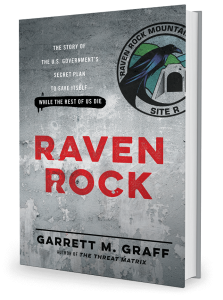Below is the text of my monthly “Editor’s Letter” in the new issue of Washingtonian, my final one as editor.
—-
The stone and steel of Washington make our city appear so much more permanent than it actually is. Looking around at the grand memorials and imposing edifices, it’s easy to forget just how new the landmarks really are.
A generation of Washingtonians still remembers the city without the Jefferson Memorial, which opened only during World War II. The Lincoln Memorial opened in 1922. The Supreme Court moved into its Capitol Hill palace in the 1930s. The East Building of the National Gallery of Art opened in 1978, and even the “old” West Building dates only to 1941. Washington National Cathedral—officially completed in 1990 after 83 years of construction—has dominated the skyline for just a handful of decades.
Of course, even though it long predates any of our lifetimes, Washington itself is one of the youngest major capitals in the world. London already had a million inhabitants in 1801, the year of its first organized census, even as Pierre L’Enfant began mapping the 6,111 acres that would become the District of Columbia out of wilderness, marshland, and farms. Farther from the DC line, growth continues full-force, as once-quiet crossroads like Tysons become global centers of innovation, teeming with corporate headquarters.
As late as the 1950s, mass transit in Washington meant a workman sitting in a hole in the middle of Wisconsin Avenue, waiting for each passing streetcar so he could manually switch its power from the overhead wires in Georgetown to the underground wires that powered the trolleys downtown. Yet this summer—theoretically—Metro’s Silver Line will open, extending the subway system into Tysons as it continues its manifest destiny toward growing Loudoun County.
This issue, our annual celebration of the Best of Washington, is meant to capture some of what makes our area, both the old and the new, so special and exciting. Throughout the feature, which begins on page 58, we highlight 100 favorites—from restaurant dishes and cocktails to stores and parks to one-of-a-kind events and traditions. We also asked notable Washingtonians—including museum curators, journalist Cokie Roberts, and former House speaker Newt Gingrich—for their picks.
The list’s full scope, from vintage stores to brand-new restaurants, evokes all of the change occurring across Washington. When I started working at this magazine nearly a decade ago, I spent a lot of time drinking with friends at Café Saint-Ex at DC’s 14th and T streets, Northwest, and the Wonderland Ballroom in Columbia Heights, both of which felt like the ends of the earth back then. Now, as I mark my final issue as editor, both bars are at the center of thriving nightlife districts, with thousands of new residents flocking to gleaming condos and apartments nearby. Today, Saint-Ex looks out on a Room & Board store, a huge Matchbox restaurant, and a Trader Joe’s.
As thousands of college graduates arrive in Washington this summer to begin jobs on Capitol Hill or at tech companies around the Beltway, they may never understand how pioneering it was of José Andrés to open his tapas restaurant Jaleo near Gallery Place in 1993, years before Abe Pollin’s investment in what’s now the Verizon Center revitalized that neighborhood. Similarly, new arrivals won’t necessarily realize that the FDR Memorial (dedicated in 1997) and the Martin Luther King Jr. Memorial (2011) haven’t long been part of the city’s marble backdrop.
Journalist Haynes Johnson wrote in his 1963 book, Dusk at the Mountain, “If there is an American dream, it is represented in the stone and steel of Washington.” Ultimately, perhaps that’s what makes the American dream so vibrant—as constant as our stone and steel may appear, they’re always evolving. And that constant change is what makes America—and Washington—thrive.



Recent Comments